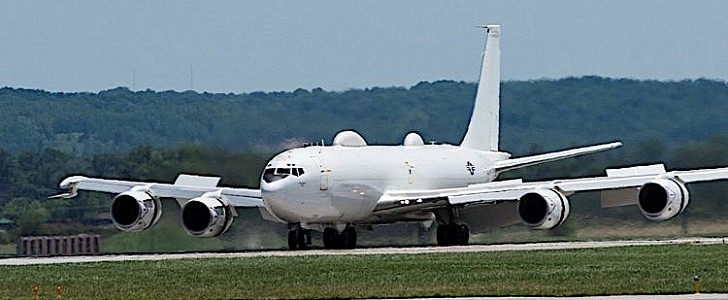We (again) live in a time when the simple use of the word “nuclear,” for whatever purpose, is enough to send cold shivers down everybody’s spines. That’s because, in the span of just a week or so, we’ve come to once again fear the unthinkable, given how casually Russian officials are flaunting the word around.
To date, the U.S. has avoided being drawn into an escalatory rhetoric with Russia over nuclear weapons, but it does seem to be taking some steps to ensure nothing goes terribly wrong in the near future.
This week, defense contractor Northrop Grumman announced it has been awarded a $111 million contract by the U.S. Navy to upgrade the Boeing 707-based E-6B Mercury, the machine that connects “the national command authority with the United States’ Nuclear Triad.”
More to the point, the company will update the command, control and communications functions of the airplane, in a process that is supposed to take over five years. Modernization work will be conducted at the Northrop Grumman facility in Lake Charles, Louisiana.
The E-6B Mercury is described by the Navy as a communications relay and strategic airborne command post, handling the launch of both ballistic missiles from submarines and, if need be, land-based intercontinental ballistic missiles as well.
The aircraft was introduced in 1998 as a replacement for the EC-135. It can hold a crew of 22 people, in charge with ensuring secure connections “between the National Command Authority (NCA) and U.S. strategic and non-strategic forces.”
Powered by four turbofan engines, the E-6B Mercury can reach speeds of 600 mph (960 kph) and, more importantly, it can fly at altitudes of about 40,000 feet (over 12,000 meters). The maximum range of the airborne command and control post is rated at 7,590 miles (12,144 km), and comes with a six-hour loitering time.
This week, defense contractor Northrop Grumman announced it has been awarded a $111 million contract by the U.S. Navy to upgrade the Boeing 707-based E-6B Mercury, the machine that connects “the national command authority with the United States’ Nuclear Triad.”
More to the point, the company will update the command, control and communications functions of the airplane, in a process that is supposed to take over five years. Modernization work will be conducted at the Northrop Grumman facility in Lake Charles, Louisiana.
The E-6B Mercury is described by the Navy as a communications relay and strategic airborne command post, handling the launch of both ballistic missiles from submarines and, if need be, land-based intercontinental ballistic missiles as well.
The aircraft was introduced in 1998 as a replacement for the EC-135. It can hold a crew of 22 people, in charge with ensuring secure connections “between the National Command Authority (NCA) and U.S. strategic and non-strategic forces.”
Powered by four turbofan engines, the E-6B Mercury can reach speeds of 600 mph (960 kph) and, more importantly, it can fly at altitudes of about 40,000 feet (over 12,000 meters). The maximum range of the airborne command and control post is rated at 7,590 miles (12,144 km), and comes with a six-hour loitering time.







